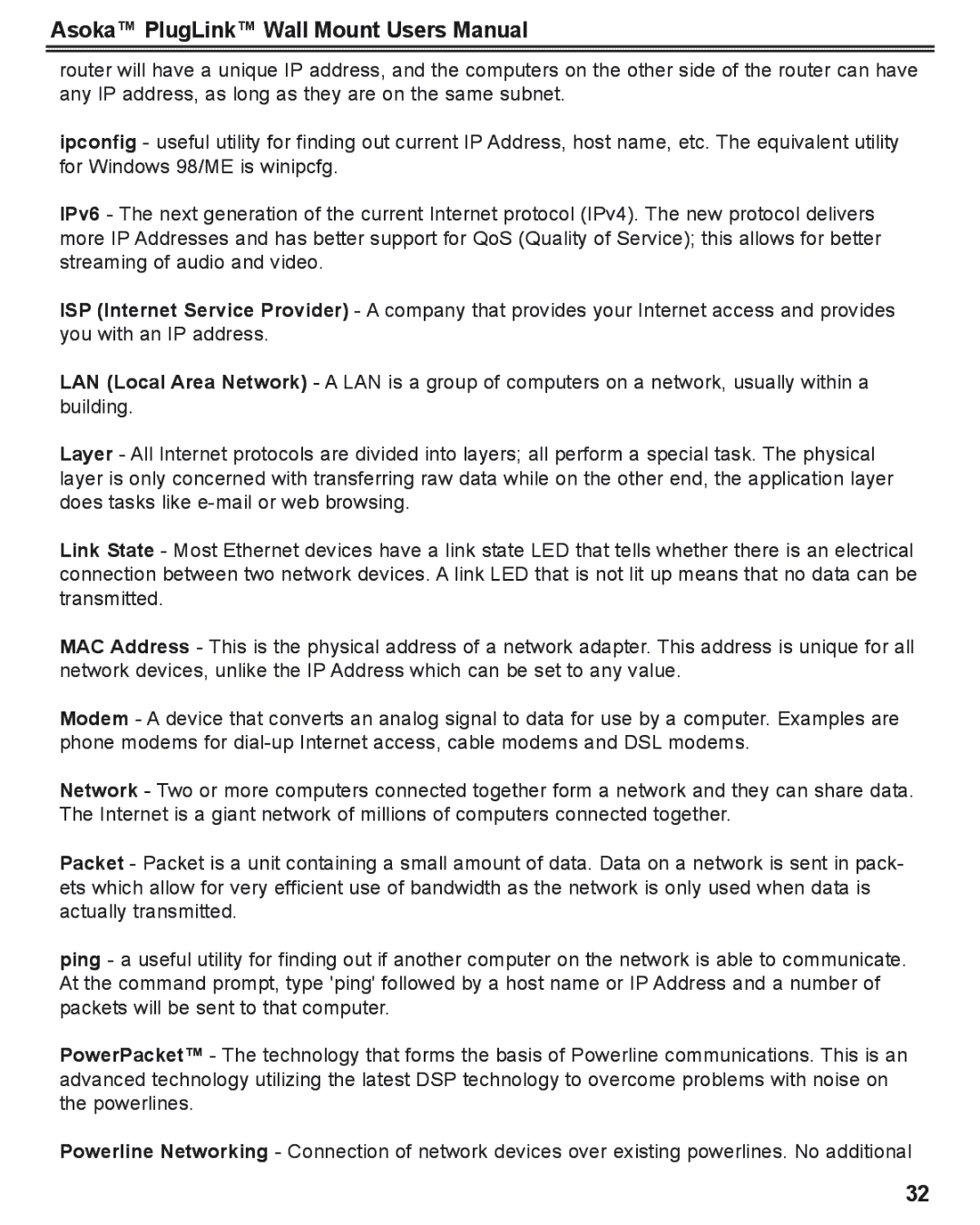Asoka™ PlugLink™ Wall Mount Users Manual
router will have a unique IP address, and the computers on the other side of the router can have any IP address, as long as they are on the same subnet.
ipconfig - useful utility for finding out current IP Address, host name, etc. The equivalent utility for Windows 98/ME is winipcfg.
IPv6 - The next generation of the current Internet protocol (IPv4). The new protocol delivers more IP Addresses and has better support for QoS (Quality of Service); this allows for better streaming of audio and video.
ISP (Internet Service Provider) - A company that provides your Internet access and provides you with an IP address.
LAN (Local Area Network) - A LAN is a group of computers on a network, usually within a building.
Layer - All Internet protocols are divided into layers; all perform a special task. The physical layer is only concerned with transferring raw data while on the other end, the application layer does tasks like
Link State - Most Ethernet devices have a link state LED that tells whether there is an electrical connection between two network devices. A link LED that is not lit up means that no data can be transmitted.
MAC Address - This is the physical address of a network adapter. This address is unique for all network devices, unlike the IP Address which can be set to any value.
Modem - A device that converts an analog signal to data for use by a computer. Examples are phone modems for
Network - Two or more computers connected together form a network and they can share data. The Internet is a giant network of millions of computers connected together.
Packet - Packet is a unit containing a small amount of data. Data on a network is sent in pack- ets which allow for very efficient use of bandwidth as the network is only used when data is actually transmitted.
ping - a useful utility for finding out if another computer on the network is able to communicate. At the command prompt, type 'ping' followed by a host name or IP Address and a number of packets will be sent to that computer.
PowerPacket™ - The technology that forms the basis of Powerline communications. This is an advanced technology utilizing the latest DSP technology to overcome problems with noise on the powerlines.
Powerline Networking - Connection of network devices over existing powerlines. No additional
32
